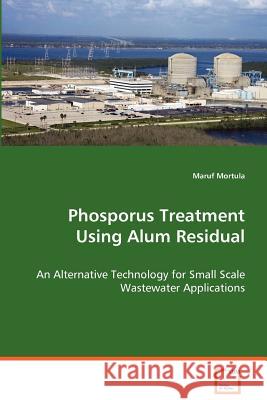Phosporus Treatment Using Alum Residual » książka
Phosporus Treatment Using Alum Residual
ISBN-13: 9783639068184 / Angielski / Miękka / 2008 / 216 str.
Phosphorus removal for small-scale wastewater applications were investigated using adsorption and coagulation. Alum sludge, a waste residual generated in water treatment utilities, was used for treatment of orthophosphate. Bench scale experiments were designed to evaluate the effectiveness for phosphorus removal. Tests were conducted on both deionized water spiked with orthophosphate and wastewater (secondary municipal effluent, effluent from biofiltration process and aquaculture process water) using oven dried alum sludge (ODS). Surface characterization was done to understand the adsorption process. The ODS was effective in adsorbing orthophosphate, and was comparable to other conventional and emerging adsorbents of orthophosphates. Alum sludge was also effective in removing phosphorus from smallscale wastewaters, even better than that of deionized water. Coagulation process tested for phosphorus removal from small-scale wastewaters was found to be ineffective. Surface characterization indicated the possibility of OH- ion being replaced by orthophosphate ions. The waste residual generated from the treatment process were found to reduce aluminum leachability.











